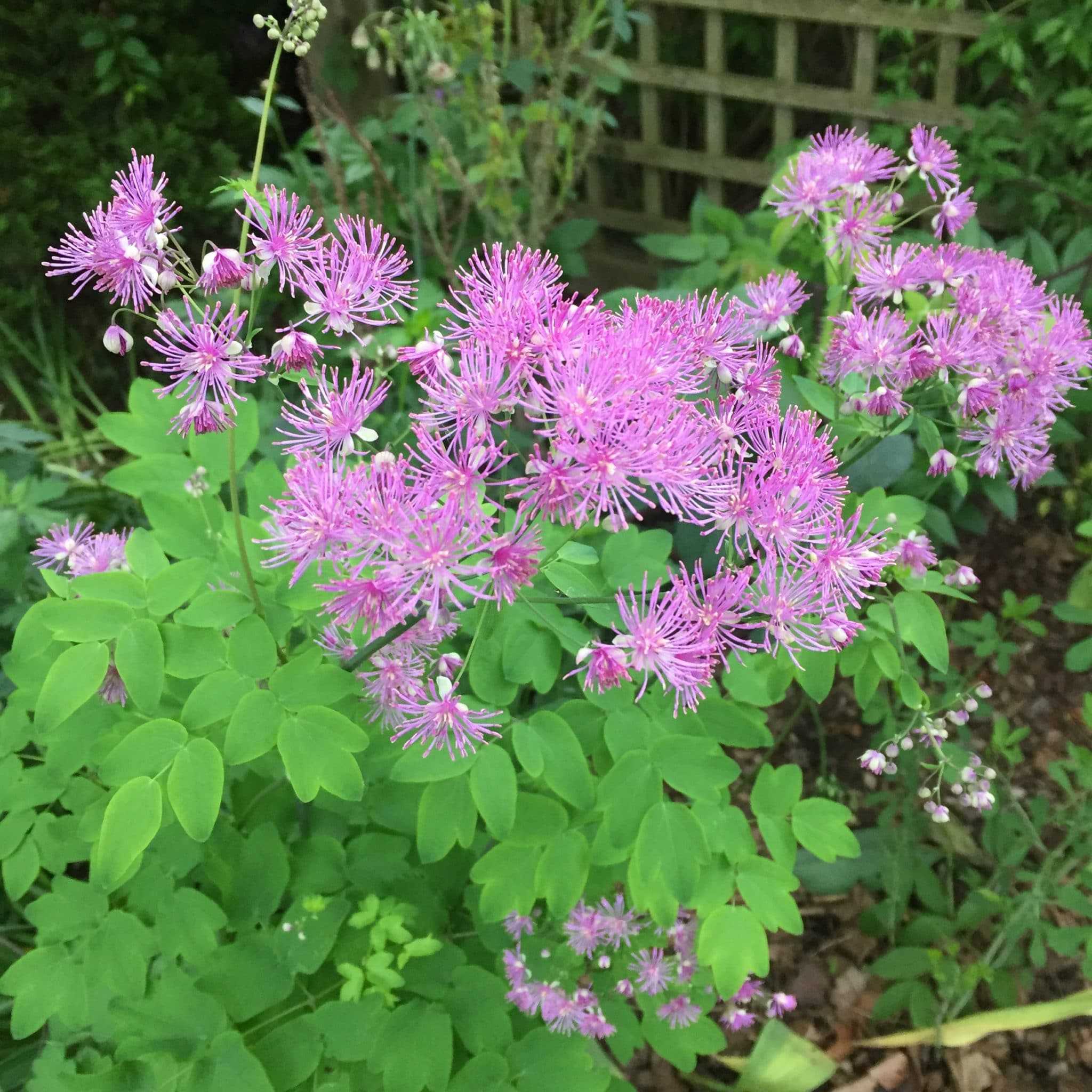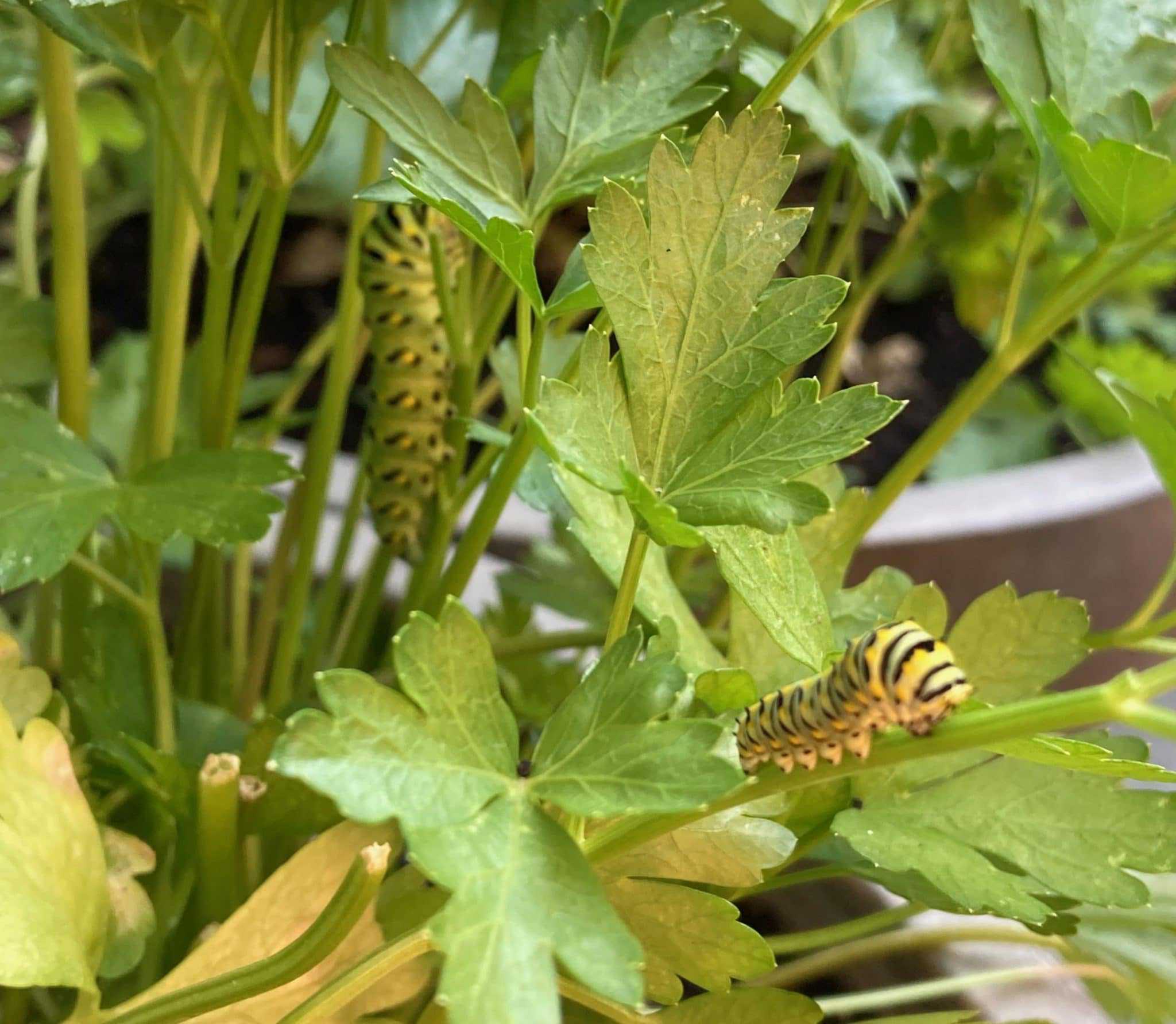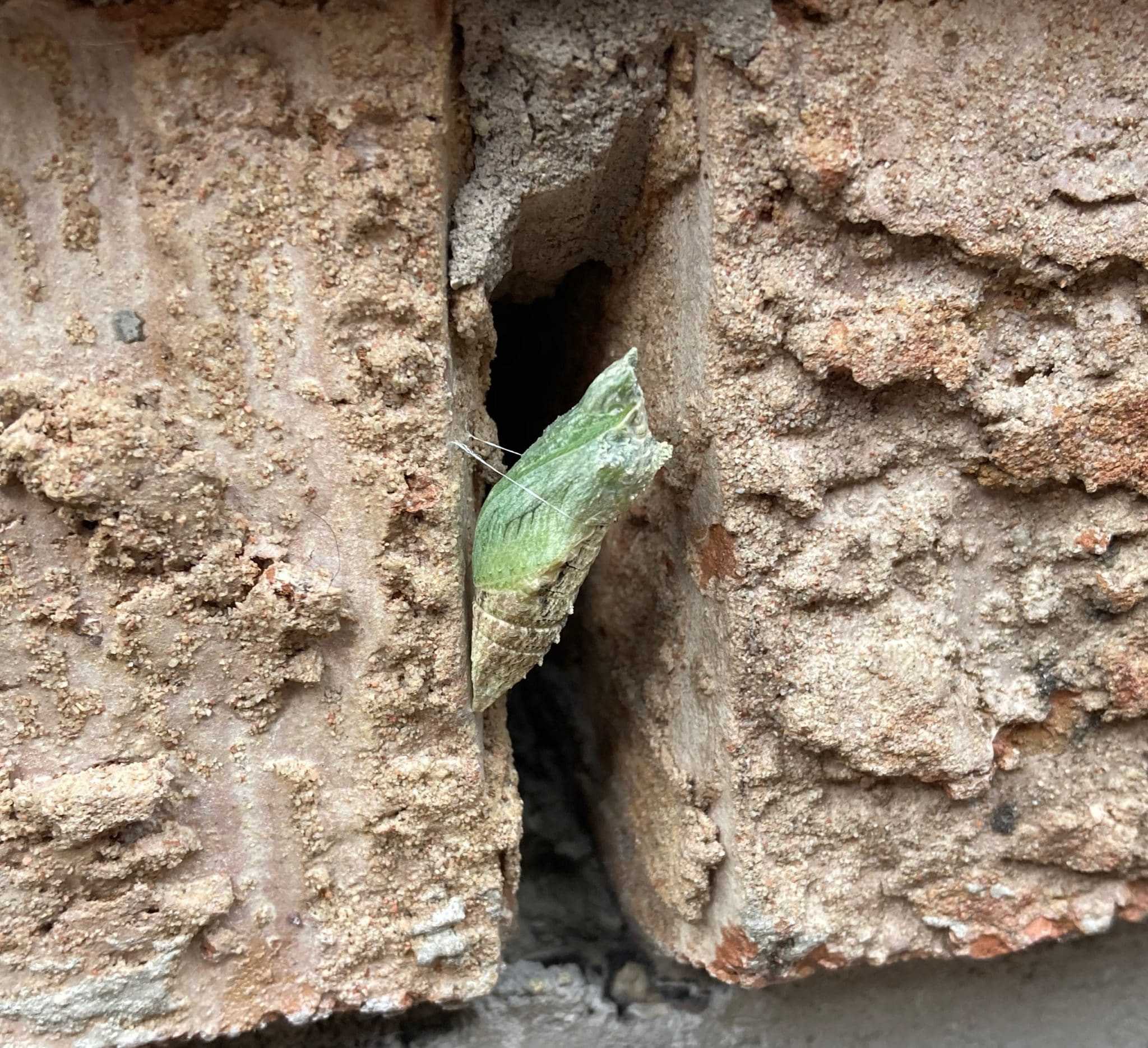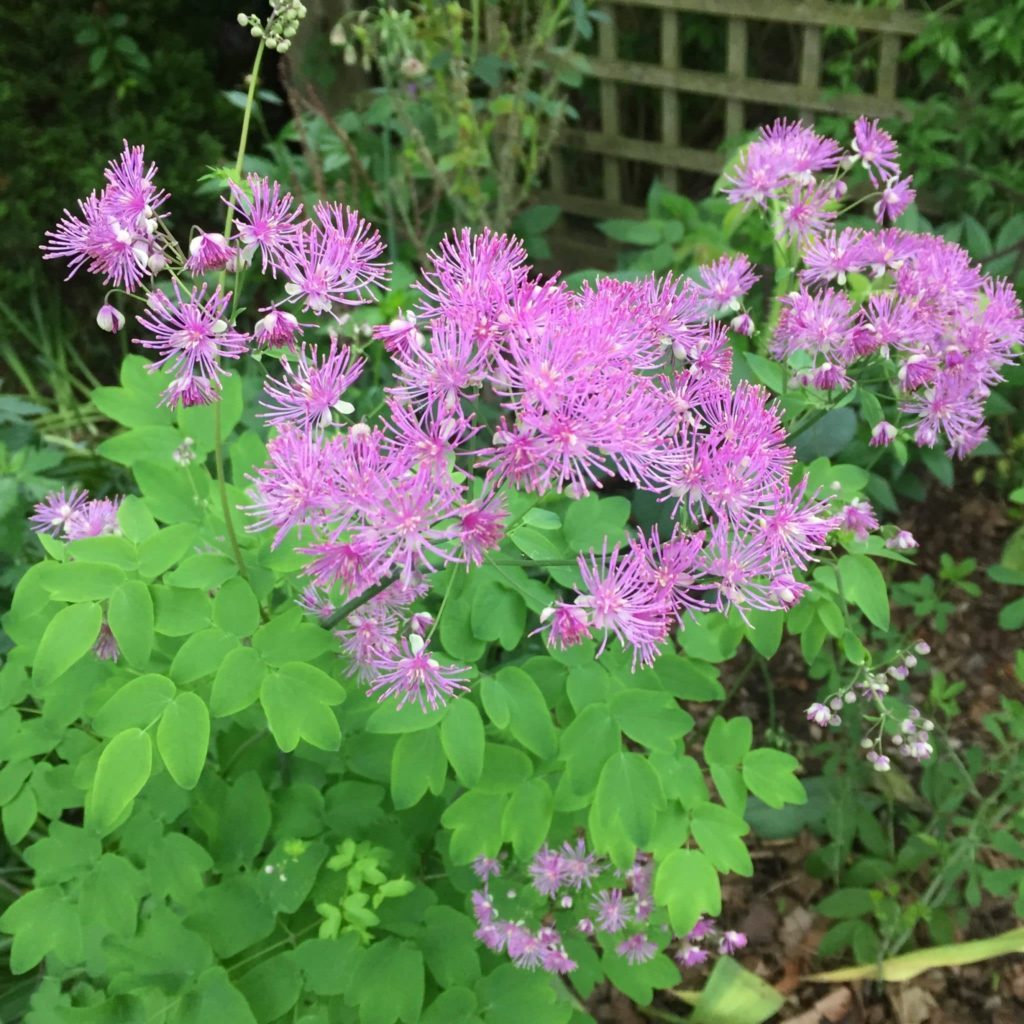Not every plant in the garden needs to be a star. Sometimes just showing up, not asking for much and blooming on a reliable basis is enough.
The meadow-rue family (Thalictrum species and cultivars) has several sturdy players; some tall and statuesque, others good for the middle row of a border, and a few that could serve as a pretty edging plant or groundcover. Admittedly, their colour range is limited to pink, purple, creamy white or soft yellow, but we can’t have everything, can we? The flowers — clusters of stamens — look like fluffy clouds resting on top of wiry stems. Not showstoppers, but good foils for roses or peonies.
Probably the best known is columbine meadow-rue (T. aquilegifolium), so named because its leaves resemble those on aquilegia. It grows to about three feet (90 cm) in my Zone 5 garden, and is usually in bloom between the peony and rose seasons. I’ve had it for years and it does reseed—a caveat for those gardeners who like to be in control.

Two more recent additions to the garden are T. flavum ‘Tukker Princess’ and ‘Elin’. ‘Tukker Princess’, with its lacy blue-green foliage and fluffy, pale yellow blooms, grows in full sun and stays mostly upright without staking, even when it ultimately reaches six feet (180 cm). It’s blooming now, and has been for about three weeks. Yet to flower, probably because it’s in partial shade, is ‘Elin’, the tallest of the meadow-rues. Plants can reach 10 feet (3 m), and are topped with small mauve flowers on purplish stems. Staking required.
I’ve not grown any of the earlier-blooming short meadow-rues, but Judith Adam describes the ones she admires in “Using meadow-rues for groundcover.” Patrick Lima wrote a profile of meadow-rues in an early print edition of Garden Making. Here’s a pdf of his article to download.
Dry + shade = a challenge
No comment from me about the weather — complaining won’t make the temperature drop or the rain start. But maybe it’s time for a reminder that plants in the shade can dry out almost as quickly as those in full sun, especially if thirsty tree roots are nearby. If some of your moisture-loving shade plants don’t make it —or you’re tired of watering them — here’s a list of eight plants for dry and shady gardens to consider.
Grow a lemon tree
Don’t let our climate hold you back from growing a lemon tree. Stephanie of Garden Therapy recently interviewed Steven Biggs, author of Grow Lemons Where You Think You Can’t, to get some growing advice. His recommendations for overwintering are encouraging. Steven publishes the newsletter Grubbing: Food Garden Life.
Party in the parsley patch
Our son’s family has been texting us updates and photos of two swallowtail caterpillars they found munching on their container of parsley plants a few days ago. Mallory, 6, solemnly assured me she didn’t mind sharing the parsley with them.


During one of her daily (perhaps hourly) checks, she noticed one caterpillar slipping away to nestle in a nearby crevice in the bricks. Lo and behold, the next day a chrysalis had formed.
Mallory and her brother, Jamie, have been learning about the next steps in their caterpillar’s journey on the Canadian Wildlife Federation site. I hope all goes well so they can observe an emerging butterfly one day next spring.
Sometimes, we focus so much on the butterflies in our garden, we forget that we need to make our spaces friendly and welcoming during their earlier growth stages, too, even if it means sacrificing a few leaves, flowers or fruits. One of Mallory’s favourite mottos is “Sharing is Caring,” something to keep in mind when we manage our gardens.









